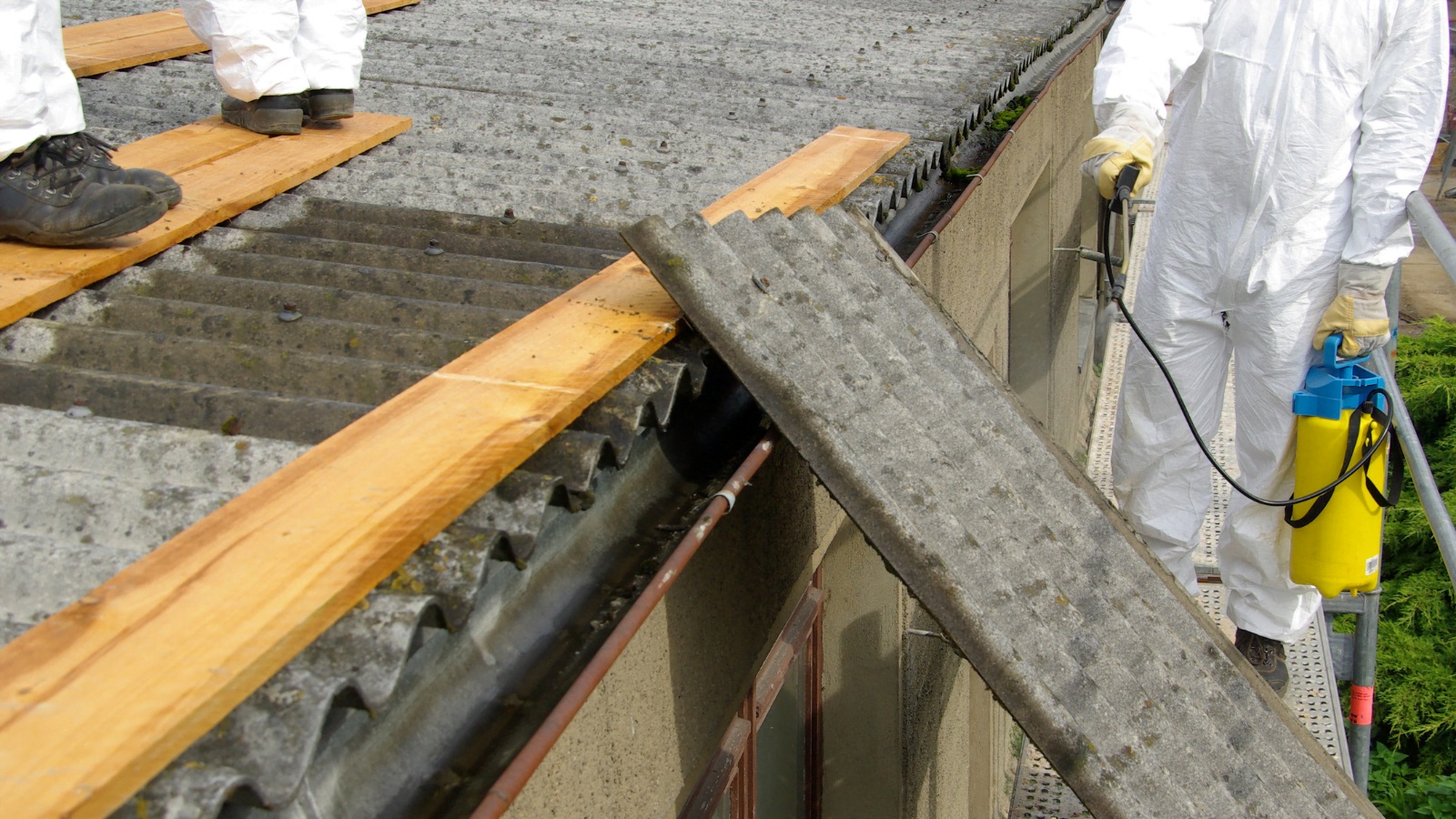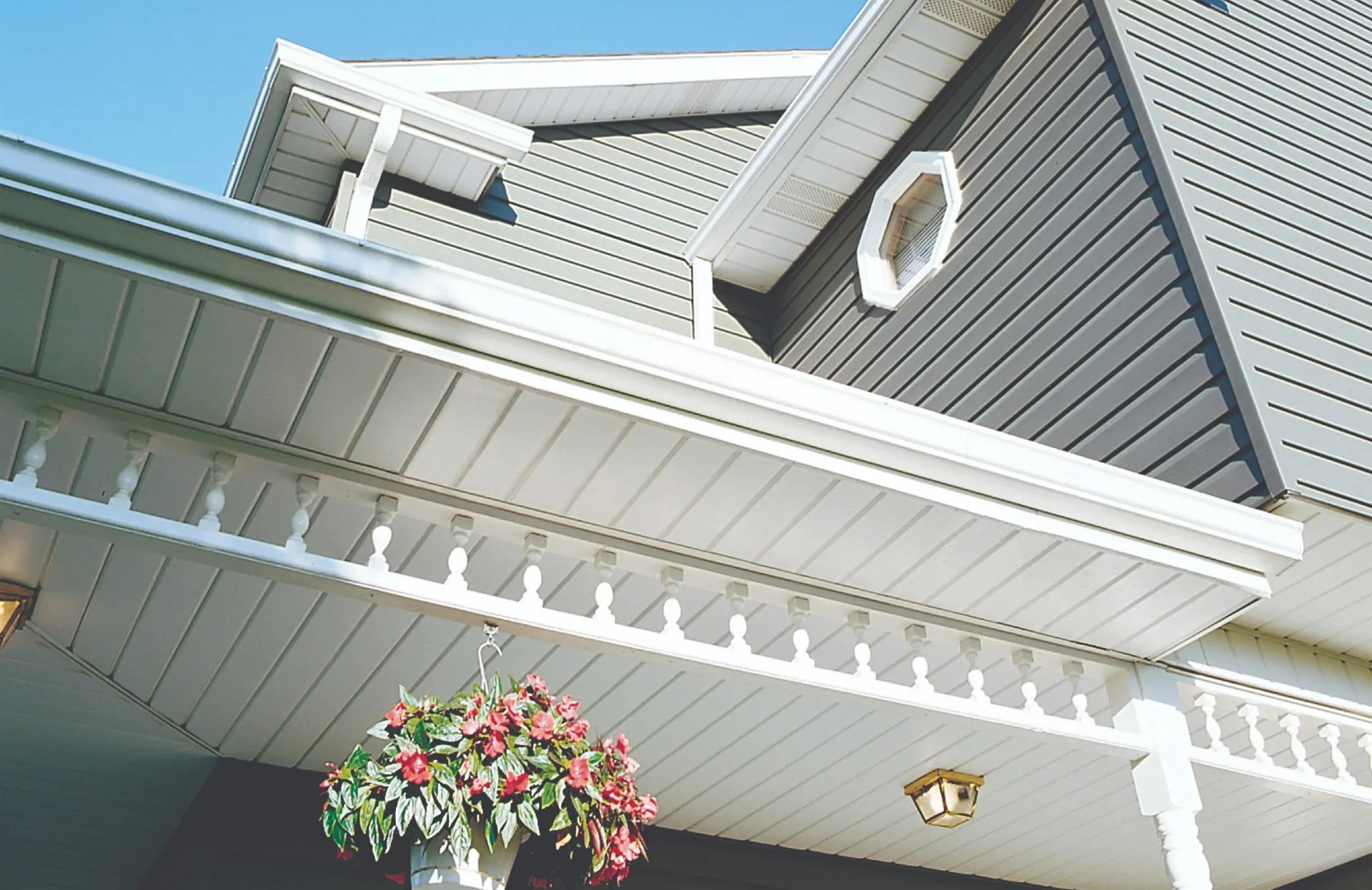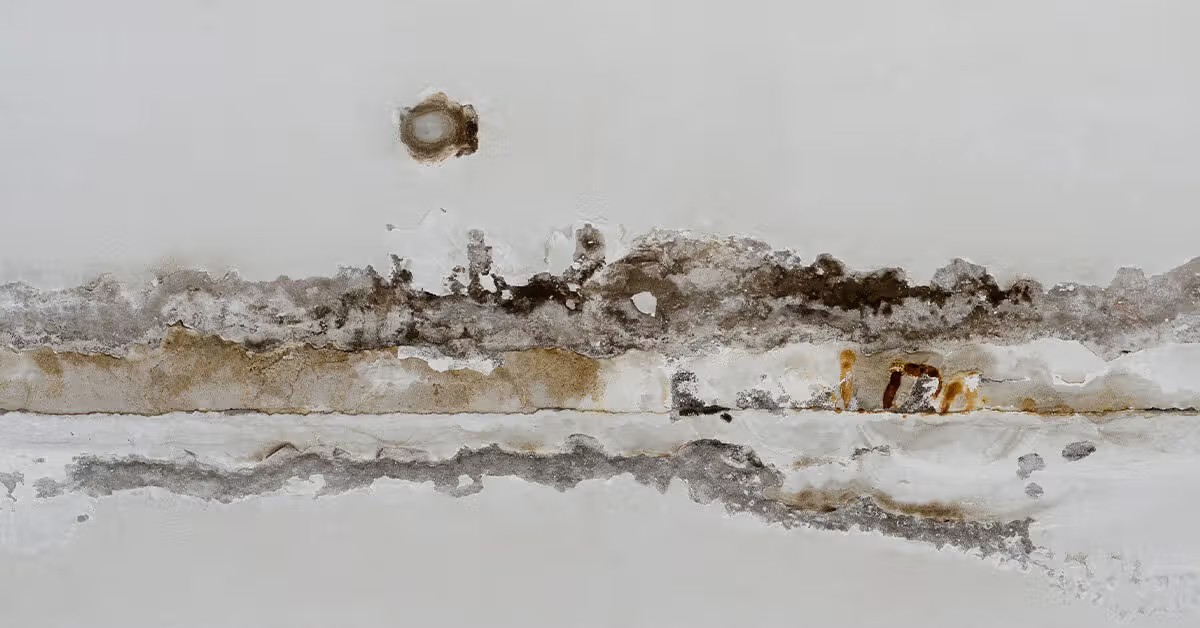Historical Use of Asbestos in Waterproofing
Back in the day, asbestos was a go-to material for home waterproofing. It was cheap and easy to get, which made it super popular. Builders loved it because it was not only waterproof but also fire-resistant and a great insulator. These qualities made it perfect for use in construction, especially in older homes. Asbestos was commonly used in adhesives, roofing shingles, and even in some paints. Its use was widespread during the 19th and 20th centuries. Unfortunately, the health risks weren’t well understood until later.
Common Asbestos-Containing Waterproofing Materials
In the realm of waterproofing, several materials commonly contained asbestos. Here’s a quick list:
- Adhesives and Sealants: These were often used in various construction applications, including waterproofing.
- Roofing Shingles: Asbestos fibers were woven into shingles for their durability and resistance to water.
- Cement and Insulation: Asbestos was mixed into cement and insulation materials to enhance their properties.
These materials are still present in many older homes today. It’s important to know if your home might have these materials, as they can pose serious health risks if disturbed.
Regulations Governing Asbestos Use in Waterproofing
Over the years, regulations have tightened around the use of asbestos. Government agencies like the Environmental Protection Agency (EPA) have stepped in to regulate and limit its use. In many places, the use of asbestos in new construction is banned or heavily restricted. However, older buildings may still contain it, and living in a house with intact asbestos siding is generally safe as long as it’s not disturbed. Homeowners need to be aware of these regulations, especially if they plan to renovate or repair their homes. It’s crucial to follow the guidelines to avoid health risks and legal issues. If you’re dealing with worn or damaged asbestos products, it’s wise to consult a professional for safe handling and removal. There’s even a free guide available to learn more about asbestos-containing products.
Health Risks Associated with Asbestos in Waterproofing
Respiratory Diseases Linked to Asbestos Exposure
Asbestos exposure is a serious health concern primarily because of its impact on the respiratory system. When asbestos fibers become airborne, they can be inhaled, leading to severe respiratory diseases. Asbestosis is one such chronic condition that results from prolonged inhalation of asbestos fibers, causing lung tissue scarring and difficulty in breathing. Symptoms often include persistent dry cough, chest pain, and shortness of breath. Moreover, asbestos exposure has been linked to pleural plaques, which are thickened areas on the lung linings that can impair lung function over time.
Cancer Risks from Asbestos in Homes
The presence of asbestos in home waterproofing materials also poses a significant cancer risk. Inhaled asbestos fibers can remain lodged in the lung tissue, leading to the development of lung cancer and mesothelioma, a rare but aggressive cancer affecting the lining of the lungs. Individuals exposed to asbestos cement sheets are particularly at risk for these cancers. Even minimal exposure can be dangerous, as asbestos fibers are not easily expelled by the body and can lead to fatal outcomes.
Long-Term Health Implications of Asbestos
The long-term health implications of asbestos exposure are profound and often irreversible. Asbestos fibers, once inhaled, can remain in the body for years, silently causing inflammation and tissue damage. Over time, this can lead to chronic health issues such as asbestosis and pleural plaques, and increase the risk of developing cancers like mesothelioma. The latency period for asbestos-related diseases can be decades, meaning symptoms might not appear until many years after exposure. It’s crucial for homeowners to recognize the potential risks and seek professional assessment if they suspect the presence of asbestos in their homes.
Identifying Asbestos in Home Waterproofing Materials
Visual Indicators of Asbestos-Containing Materials
Spotting asbestos in your home isn’t always straightforward. Asbestos fibers are often mixed with other materials, making them hard to identify just by looking. However, some common asbestos-containing materials might offer visual clues. For instance, older homes might have popcorn ceilings or certain types of insulation that could contain asbestos. These materials often appear as tiny, fluffy fibers that can be white, green, or brown. If you notice any unusual materials in your home, especially if it’s older, it might be wise to look into whether asbestos is present.
Professional Testing for Asbestos
While you might suspect asbestos, confirming its presence is a whole different ball game. To test for asbestos, you can either use a DIY at-home testing kit or contact a local asbestos testing company for professional assistance. Professionals have the right tools and expertise to safely handle and test materials without risking exposure. They can take samples and analyze them in a lab to confirm whether asbestos is present. It’s a safer bet than trying to check on your own.
Common Locations of Asbestos in Homes
Asbestos can be lurking in more places than you might expect. In homes built before the 1990s, it’s often found in insulation, siding, and even some floor tiles. Asbestos is a hazardous material often found in insulation, siding, and popcorn ceilings. Other spots to watch include roofing materials and old pipe insulation. It’s important to be aware of these potential hiding spots, especially if you’re planning renovations or repairs. Knowing where asbestos might be can help you take the right precautions and avoid disturbing these dangerous fibers.
Safe Removal of Asbestos from Waterproofing Materials
Hiring Certified Asbestos Abatement Professionals
When it comes to removing asbestos from your home, it’s crucial to hire certified professionals. These experts are trained to handle hazardous materials safely and effectively. Attempting to remove asbestos yourself can lead to serious health risks and legal trouble. Professionals not only have the right equipment but also the knowledge to ensure that the removal process is done without contaminating your home further.
Steps in the Asbestos Removal Process
The process of asbestos removal is meticulous and involves several steps:
- Inspection and Testing: Before any work begins, professionals will inspect your home and test materials to confirm the presence of asbestos.
- Preparation of the Area: The area is sealed off to prevent fibers from spreading. This includes using plastic sheeting and negative air pressure units.
- Removal: Trained workers carefully remove asbestos-containing materials, ensuring minimal disturbance to prevent fibers from becoming airborne.
- Disposal: The materials are placed in sealed bags and disposed of according to local regulations.
- Final Inspection: After removal, the area is thoroughly cleaned and inspected to ensure all asbestos has been safely removed.
Legal Requirements for Asbestos Removal
There are strict legal requirements governing asbestos removal. Homeowners must ensure that any removal work is compliant with local, state, and federal regulations. Failure to comply can result in hefty fines and serious health risks. It’s important to work with professionals who understand these laws and can navigate the necessary paperwork and procedures. For instance, asbestos removal typically takes one to five days, depending on the extent of the contamination and location of the materials. Learn more about asbestos removal timelines.
Impact of Storm Damage on Asbestos-Containing Waterproofing
How Storms Disturb Asbestos Materials
Storms can wreak havoc on homes, particularly those containing asbestos. When a storm hits, the powerful winds and water can disturb asbestos-laden materials, breaking them apart and releasing harmful fibers into the air. These fibers are invisible and can remain airborne for hours, posing a serious health risk to anyone nearby. It’s crucial to be aware of this danger, especially if your home was built before the 1980s when asbestos was commonly used in construction materials.
Safety Precautions After Storm Damage
After a storm, safety should be the top priority. Here are some steps to take:
- Avoid entering the damaged areas of your home until it has been inspected by a professional.
- Hire an asbestos abatement expert to assess and test for asbestos presence.
- Ensure that any repair work is done by certified professionals who can safely handle asbestos materials.
Role of Insurance in Asbestos Remediation
Insurance can play a significant role in managing asbestos issues after storm damage. Many policies cover asbestos remediation if it’s related to storm damage. Here’s how it works:
- Report the damage to your insurance company as soon as possible.
- Get a professional assessment to confirm the presence of asbestos.
- Work with your insurer to understand what costs are covered, including potential removal or encapsulation of asbestos materials.
Understanding your insurance policy can help you navigate the financial aspects of asbestos remediation, ensuring your home is safe without breaking the bank.
Alternatives to Asbestos in Modern Waterproofing
Non-Asbestos Waterproofing Materials
In the quest for safer homes, many homeowners are turning to modern waterproofing materials that don’t contain asbestos. These alternatives not only reduce health risks but also offer enhanced durability and efficiency. Some popular non-asbestos materials include:
- Rubberized Asphalt: Known for its flexibility and strong adhesive properties, rubberized asphalt is commonly used in roofing and basement waterproofing.
- Polyurethane Membranes: These are favored for their seamless application and resistance to wear and tear.
- Bentonite Clay: Often used in foundation waterproofing, bentonite clay swells upon contact with water, providing an effective seal.
Benefits of Asbestos-Free Waterproofing
Choosing asbestos-free materials for waterproofing comes with a host of benefits. Firstly, it eliminates the health hazards associated with asbestos fibers, which can cause serious respiratory issues and cancer. Additionally, modern materials often provide better insulation and energy efficiency. They are also more environmentally friendly, as they don’t release harmful fibers into the air or soil.
Transitioning to Safer Waterproofing Solutions
For those living in older homes, transitioning to safer waterproofing solutions is crucial. The first step is identifying potential asbestos-containing materials, which might be present in old roofing or siding. Once identified, homeowners should consult with professionals to safely remove and replace these materials. The EPA’s approval of Alternative Asbestos Control Methods (AACM) can guide homeowners in this transition. Furthermore, considering options like concrete fiber roof sheets can provide both safety and durability, offering a modern solution to an age-old problem.
Legal and Financial Implications of Asbestos in Homes
Homeowner Responsibilities and Liabilities
Homeowners have a duty to ensure their properties are safe, which includes managing any asbestos present. Failing to address asbestos issues can lead to legal consequences, especially if tenants or buyers are affected by exposure.
- Disclosure Obligations: When selling a property, owners are often required by law to disclose the presence of asbestos. This can impact the sale price or deter potential buyers.
- Negligence Claims: If asbestos exposure occurs due to a homeowner’s negligence, they might face lawsuits based on negligence, strict liability, or breach of warranty.
- Regulatory Compliance: There are specific regulations governing asbestos management and removal, and non-compliance can result in penalties.
Financial Costs of Asbestos Remediation
Removing asbestos can be a significant financial burden. The cost varies based on the extent of contamination and the complexity of removal.
- Inspection and Testing: Before removal, professional testing is necessary to confirm asbestos presence, which adds to the initial costs.
- Removal Expenses: The actual removal process is expensive, often requiring certified professionals to ensure safety and compliance with regulations.
- Potential Loss in Property Value: Homes with asbestos might see a decrease in value, affecting resale prospects.
Insurance Coverage for Asbestos Issues
Insurance coverage for asbestos-related problems can be complex. Most standard homeowner policies do not cover asbestos removal unless it is part of a covered peril, like storm damage.
- Policy Review: Homeowners should carefully review their insurance policies to understand the extent of coverage for asbestos issues.
- Additional Coverage Options: Some insurers offer riders or additional coverage specifically for asbestos-related claims.
- Claims Process: Filing a claim for asbestos removal can be intricate, requiring thorough documentation and proof of necessity.
In conclusion, dealing with asbestos in homes involves navigating a maze of legal responsibilities and financial challenges. Homeowners must stay informed and proactive to manage these risks effectively.
The Environmental Impact of Asbestos in Waterproofing
Asbestos Contamination in Soil and Water
Asbestos, once hailed for its durability and resistance to heat, has left a lasting environmental footprint. When asbestos-containing materials degrade, they can release fibers into the environment, contaminating soil and water. This contamination can occur through improper disposal or natural weathering processes. Asbestos fibers in soil can pose a risk to plant life and enter the food chain, affecting ecosystems. Additionally, when these fibers reach water bodies, they can affect aquatic life and potentially enter drinking water sources, posing health risks to humans.
Disposal of Asbestos-Containing Materials
Disposing of asbestos-containing materials is a complex process that requires adherence to strict regulations to prevent environmental contamination. The disposal process typically involves:
- Identifying and segregating asbestos materials from other waste.
- Properly sealing the materials in leak-proof containers to prevent fiber release.
- Transporting the waste to designated disposal facilities equipped to handle hazardous materials.
Failure to follow these steps can lead to asbestos fibers being released into the air, soil, or water, causing widespread contamination.
Environmental Regulations on Asbestos
Governments worldwide have implemented regulations to mitigate the environmental impact of asbestos. These regulations often include restrictions on the use of asbestos, guidelines for safe removal and disposal, and monitoring of asbestos levels in the environment. In the United States, agencies like the Environmental Protection Agency (EPA) oversee these regulations to protect both human health and the environment. Despite these efforts, legacy asbestos remains a challenge, as many older buildings still contain asbestos materials that can degrade over time and contribute to environmental contamination.
Preventive Measures for Asbestos Exposure in Homes
Regular Inspections for Asbestos
To minimize the risk of asbestos exposure, it’s crucial to conduct regular inspections of your home, particularly if it was built before the 1990s. Routine checks can help identify potential asbestos-containing materials before they become a health hazard. Homeowners should consider hiring a professional home inspector who is trained to spot asbestos in common areas such as roofing, insulation, and flooring. These experts can provide valuable insights into the presence of asbestos and recommend further testing if needed.
Educating Homeowners on Asbestos Risks
Understanding the risks associated with asbestos is essential for every homeowner. Asbestos fibers, when disturbed, can become airborne and pose serious health risks. Homeowners should educate themselves about the materials in their homes that might contain asbestos, such as old floor tiles or insulation. Awareness and knowledge can empower homeowners to take proactive steps in managing and reducing asbestos exposure risks.
Implementing Safety Measures in Older Homes
For homes that are known to contain asbestos, implementing safety measures is key. This includes sealing off areas where asbestos is present and ensuring that any renovations or repairs are carried out by professionals who are trained in handling asbestos safely. Some practical steps include:
- Avoiding any DIY projects that might disturb asbestos materials.
- Ensuring that any asbestos removal is done by certified professionals.
- Regularly checking for signs of wear and tear in asbestos-containing materials, as deterioration can increase the risk of fiber release.
By taking these preventive measures, homeowners can significantly reduce the risk of asbestos exposure, safeguarding the health of their families and communities.
The Future of Asbestos Regulation and Home Safety
Upcoming Changes in Asbestos Legislation
In recent years, there has been a significant push towards stricter asbestos regulations. Countries worldwide are working to enhance legislation with the aim of completely banning asbestos by 2032. This global effort is supported by initiatives such as Global Awareness Weeks, which aim to eradicate asbestos hazards. In the U.S., the Environmental Protection Agency (EPA) made a pivotal move in April 2019 by establishing a final rule. This rule prohibits certain uses of asbestos that are no longer available in the market and are not regulated by other laws. Such legislative measures are crucial in protecting the public from the dangers of asbestos.
Innovations in Asbestos Detection and Removal
As technology advances, so do the methods for detecting and removing asbestos. New innovations are making it easier and safer to identify asbestos in homes and other buildings. These developments include more precise testing methods and safer removal techniques, which help minimize the risk of exposure. Such advancements not only protect individuals but also reduce the environmental impact of asbestos removal.
Promoting Asbestos Awareness and Education
Raising awareness about the dangers of asbestos and educating the public is essential for preventing exposure. Efforts are being made to inform homeowners about the risks associated with asbestos and the importance of professional testing and removal. Educational campaigns are crucial in ensuring that people understand the potential health risks and legal implications of asbestos in their homes. By promoting awareness, communities can work together to create safer living environments.
Research Corner





